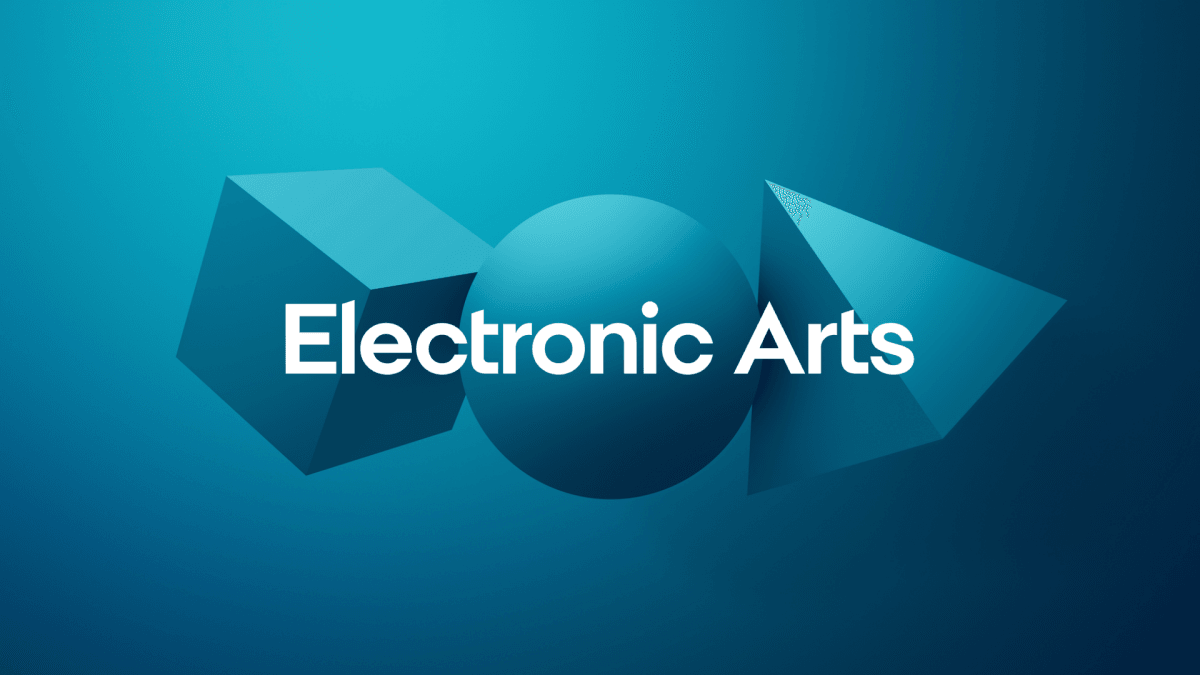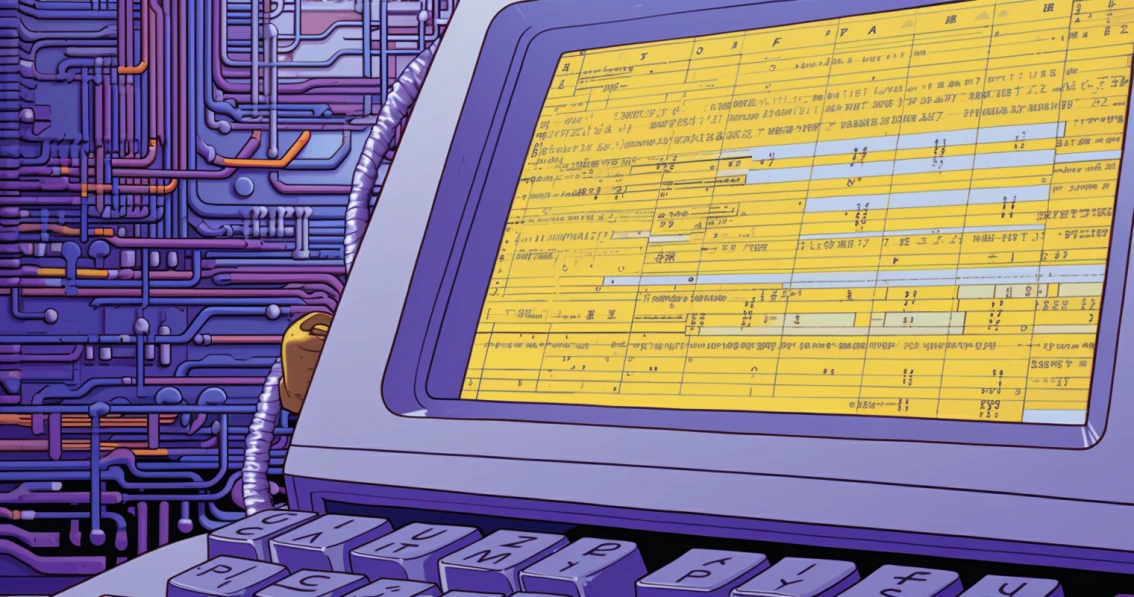League of Legends Wild Rift continues to be one of the most popular mobile games in the world, with millions of players logging in every month. In this article, we’ll break down key statistics, including the League of Legends player count, monthly and daily active users, and revenue trends. Whether you’re a dedicated player or just curious about the game’s performance, these numbers provide valuable insight into its enduring popularity.
How Many People Play League of Legends?
League of Legends maintains a massive player base, with millions of active users every month. Below, we analyze monthly and daily League of Legends player count, highlighting key trends in engagement over the past year.

League of Legends Monthly Player Count (Monthly Active Players)
Here is the League of Legends player count by month:
February 2025: 2,313,456
January 2025: 2,412,055
December 2024: 2,875,627
November 2024: 2,672,656
October 2024: 2,070,618
September 2024: 2,023,956
August 2024: 2,063,795
July 2024: 2,176,814
June 2024: 2,144,961
May 2024: 2,155,102
April 2024: 2,193,099
March 2024: 2,396,906
February 2024: 2,466,346
January 2024: 2,498,097
The numbers show notable fluctuations in player activity throughout the year. December 2024 recorded the highest number of monthly active players at nearly 2.88 million, likely driven by holiday promotions, new content, or esports events.
However, the League of Legends player count dropped significantly in February 2025, suggesting post-holiday fatigue or seasonal variations in engagement. September 2024 saw one of the lowest counts at 2.02 million, indicating a potential dip in interest before the competitive season ramped up in later months.
League of Legends Daily Player Count (Daily Active Players)
Here is the League of Legends daily player count:
February 2025: 304,457
January 2025: 326,555
December 2024: 365,959
November 2024: 317,130
October 2024: 270,156
September 2024: 272,737
August 2024: 281,817
July 2024: 290,857
June 2024: 293,665
May 2024: 298,211
April 2024: 306,742
March 2024: 325,210
February 2024: 335,660
January 2024: 329,203
The daily player count follows a similar trend to the monthly figures, with December 2024 seeing the highest engagement at nearly 366,000 daily players. This peak aligns with seasonal events and the game’s competitive calendar. However, by February 2025, daily activity dropped to just over 304,000 players, continuing a downward trend seen in previous months. October 2024 saw one of the lowest daily counts at 270,156, suggesting a lull in player activity, possibly due to a lack of major in-game events during that period.
These trends highlight the cyclical nature of player engagement, with peaks around major updates, holidays, and competitive seasons, followed by dips in less active periods. Riot Games’ ability to introduce compelling content and events plays a crucial role in maintaining high engagement throughout the year.
How Many People Are Playing League of Legends Name Right Now?
304,457 players are currently active in League of Legends. This number represents the most recent daily active users (DAU) data available, showcasing a consistent player base. While this is a drop from the December 2024 peak of 365,959, it still indicates strong engagement levels.
The concurrent player count tends to fluctuate throughout the day, peaking during prime gaming hours. Factors such as time zone differences, esports tournaments, and new content releases significantly impact real-time player numbers. If Riot Games releases major updates, balance changes, or special events, player counts often see noticeable spikes. Conversely, when there are no major updates, the numbers stabilize at a slightly lower average.
League of Legends Player Stats
League of Legends has one of the most engaged gaming communities, with millions of players worldwide logging in daily. Below, we break down key player stats, including demographics, session length, and average session count, to understand how and why players stay committed to the game.
League of Legends Demographics
As of 2025, League of Legends attracts a predominantly male audience, with approximately 87% identifying as male, 12% as female, and 1% as non-binary.
Regionally, China leads with over 70 million active monthly players, making it the largest contributor to the global player base. Europe West follows, encompassing major European nations like France, Germany, and the United Kingdom. South Korea, despite its smaller population, boasts nearly 20 million regular players, reflecting the game’s deep cultural integration. North America maintains a vibrant community with over 15 million monthly active users.
In France alone, more than 1.5 million players engage with the game, highlighting its widespread appeal.
How Long Do People Play For (Average Session Length)
On average, players spend 39 minutes per session in League of Legends.
This relatively long session length reflects the game’s match-based structure, where most games last between 30 and 45 minutes. The duration suggests high engagement, as players remain immersed throughout their matches. Riot Games sustains player interest through frequent balance updates, new champion releases, and seasonal events. However, reducing queue times and optimizing matchmaking could enhance the experience further.
Average Session Count
Players log in for three sessions per day on average. This level of engagement indicates that League of Legends remains a key part of daily gaming routines. Many players return multiple times a day for ranked games, casual matches, or special in-game events. To further boost session counts, Riot Games could introduce more daily incentives, such as time-limited game modes or enhanced rewards for consecutive logins.
How Much Money Does League of Legends Make?
League of Legends has generated significant revenue over the years, maintaining its status as one of the highest-earning games in the industry. Below, we break down its all-time earnings, monthly revenue trends, and average revenue per daily active user (ARPDAU).
League of Legends All-Time Revenue
Since its launch, League of Legends has earned a staggering $271,343,045 in total revenue. This impressive figure highlights the game’s long-term success and its ability to sustain a highly profitable monetization model.

League of Legends Revenue by Month
February 2025: $5,324,685
January 2025: $8,164,171
December 2024: $8,449,593
November 2024: $6,955,435
October 2024: $6,102,314
September 2024: $7,102,138
August 2024: $7,905,012
July 2024: $4,795,701
June 2024: $5,921,368
May 2024: $6,977,053
April 2024: $7,490,987
March 2024: $4,958,056
February 2024: $7,288,385
January 2024: $6,980,192
League of Legends’ revenue fluctuates throughout the year, with clear peaks in December 2024 ($8.45M) and January 2025 ($8.16M), likely due to holiday promotions, battle passes, and in-game events driving spending. Conversely, months like July 2024 ($4.79M) and March 2024 ($4.95M) saw lower revenue, potentially indicating seasonal dips in player engagement.
Special events, skin releases, and esports-related activities significantly impact revenue spikes. Riot Games’ ability to introduce high-demand cosmetics and limited-time offers plays a crucial role in maintaining a strong revenue stream.
Average Revenue Per Daily Active User (ARPDAU)
The ARPDAU stands at $0.47, meaning that, on average, each daily active user generates $0.47 in revenue. This is a strong number for a free-to-play game, reflecting an effective monetization strategy centered around in-game purchases rather than mandatory fees.
Riot Games sustains this ARPDAU through microtransactions, battle passes, and exclusive cosmetics. Compared to other free-to-play games, this figure indicates a healthy level of player spending without being overly aggressive in monetization tactics.
How Many Downloads Does League of Legends Have?
League of Legends has been downloaded 79,447,426 times, a testament to its massive global appeal. Below is a breakdown of its monthly download trends.
League of Legends Downloads by Month
February 2025: 524,368
January 2025: 933,816
December 2024: 1,249,796
November 2024: 1,183,763
October 2024: 713,797
September 2024: 675,651
August 2024: 689,240
July 2024: 759,728
June 2024: 711,901
May 2024: 682,692
April 2024: 706,441
March 2024: 855,374
February 2024: 885,426
January 2024: 932,758
Download trends reveal a consistent influx of new players, with December 2024 (1.25M downloads) leading the way, likely due to holiday promotions, new content updates, and esports events drawing in fresh audiences. However, downloads dropped significantly in February 2025 (524K), suggesting a post-holiday decline in new player acquisition.
High download numbers don’t always correlate with sustained engagement, but they highlight the continued ability of League of Legends to attract new players. Riot Games leverages major updates, champion releases, and marketing campaigns to boost downloads during peak periods.
League of Legends User Retention
Retention rate is a crucial metric in gaming that measures how many players continue playing the game after a certain period. It helps determine how engaging and rewarding the experience is for players over time. Below is a breakdown of League of Legends’ retention rates:
- Day 1 Retention: 42.1% – This means that 42.1% of players return to play the game the day after they first install it.
- Day 7 Retention: 13.7% – After a week, only 13.7% of new players are still actively playing.
- Day 14 Retention: 7.4% – By the second week, retention drops further, meaning more than 92% of new players have already quit.
- Day 30 Retention: 4% – Just 4% of players continue playing a month after installing the game.
- Day 60 Retention: 3.2% – At the two-month mark, a small fraction of players remain engaged.
- Day 90 Retention: 2.7% – Retention stabilizes slightly, indicating that these are the most dedicated players.
- Day 180 Retention: 1.6% – Only a tiny percentage of players stick around after six months.
- Day 360 Retention: 0.5% – A year later, just 0.5% of players remain active, meaning that nearly all new players have left within 12 months.
Retention Analysis
These retention figures follow a common pattern seen in free-to-play games, where there is a sharp drop-off after the first few days but a dedicated core of long-term players who stick around. A 42.1% Day 1 retention rate is solid, indicating that a significant portion of players finds the game interesting enough to return the next day. However, the steep decline to 13.7% by Day 7 suggests that many players either find the game too complex, unrewarding, or difficult to progress in.
Long-term retention remains a challenge, with only 4% of players staying after a month and an even smaller fraction continuing after a year. These numbers show that while League of Legends is highly engaging for committed players, many newcomers do not stay long-term.
How League of Legends Increases Retention
Despite natural drop-offs, Riot Games uses several strategies to keep players engaged:
- New Content and Updates – Regular champion releases, skins, and balance updates keep the game fresh.
- Ranked Play and Competitive Scene – The ranking system gives players long-term progression goals.
- Live Events and Missions – Limited-time events and special rewards encourage daily play.
- Social Features and Community Engagement – Clans, friend lists, and competitive play with friends increase social investment.
- Esports and Streaming Popularity – The game’s professional scene keeps interest high, even among casual players.
While League of Legends retains a loyal and competitive player base, the game could improve long-term retention by refining its onboarding process for new players, offering better progression incentives, and continuing to optimize matchmaking to create a more balanced and enjoyable experience for all skill levels.
League of Legends: Wild Rift Overview
League of Legends: Wild Rift is a mobile adaptation of the popular PC game, League of Legends, developed and published by Riot Games. Designed from the ground up for mobile devices, Wild Rift offers a streamlined and fast-paced multiplayer online battle arena (MOBA) experience.
Who developed League of Legends: Wild Rift?
Riot Games, the creators of the original League of Legends, developed and published Wild Rift to bring the classic MOBA experience to mobile platforms.
Is League of Legends: Wild Rift free?
Yes, Wild Rift is free-to-play. Players can download and enjoy the game without any initial purchase. The game offers in-app purchases for cosmetic items, such as champion skins and other customization options.
What type of game is League of Legends: Wild Rift?
Wild Rift is a multiplayer online battle arena (MOBA) game. In each match, two teams of five players compete to destroy the opposing team’s Nexus, located within their base. Players select from a roster of champions, each with unique abilities and playstyles, to engage in strategic 5v5 combat.
When did League of Legends: Wild Rift come out?
Wild Rift’s open beta began on October 27, 2020, in regions including Japan, South Korea, and Southeast Asia. The game expanded to other regions, with the North American open beta launching on March 29, 2021.
Is League of Legends: Wild Rift still popular in 2025?
As of 2025, League of Legends: Wild Rift continues to enjoy a robust and active player base. Regular updates, new champion releases, and engaging in-game events contribute to its sustained popularity. The game’s presence in the mobile esports scene further solidifies its status as a leading title in the genre.
How to Play League of Legends: Wild Rift?
Wild Rift follows a typical competitive MOBA core gameplay.
This includes 5v5 gameplay on an open map, where matches last until one team wins.

Core Gameplay
Every player chooses one champion to bring into the match. Depending on their roles, the players divide across lanes (top, middle, bottom) or go into the jungle.
The combat consists of slaying AI monsters (minions) and the enemy players’ champions.
While they push or defend lanes, champions get stronger and stronger. The goal of the game is to destroy the enemy team’s towers across the lanes and finally – destroy their Nexus (base core).
Here’s our veteran’s point of view on the Wild Rift gameplay.
“I feel like some important PC aspects are left out. For example macro/micro gameplay, farming, objectives focus (dragon, turrets, Baron). Here, everything is about fighting. This is largely due to the game’s spell auto-aim feature. In the PC version, there is no such thing.“
As you can see, the gameplay is simplified. This is done to lower the entry barrier for mobile players. Besides, small mobile screens simply can’t deliver as much complexity as PC screens.

Game Modes
In Wild Rift, players can play with complete strangers or with their friends. Also, they can compete against their worst enemies, random teams, or machines.
Currently, players can choose between three modes:
- Co-op vs. AI
- Unranked PvP
- Ranked
Players mostly play the mode against AI until they feel ready to play against other teams. Once they are ready, they can play against other players without it affecting their ranking.
They can also play ranked games, which are the game’s main mode. Here, players can measure up against the competition and slowly climb the competitive ladder. But first, they need to reach level 10 to unlock it.

Progression System
The progression in Wild Rift works similarly to the desktop version.
Unfortunately for many PC players, progress is not transferable. On mobile, everyone is starting from zero – whether they are newbies or experienced players. From what I’ve seen across the app stores, PC players aren’t exactly thrilled with this…
New players will get plenty of champions early in the game and will quickly grow their collection. Moreover, as they play, their player level will increase.
Besides this, player progression is visible in the Ranked mode. Here, players climb tiers in a ladder system during a season. This type of progression system helps players get a clear view of how they stand against others in this competitive environment.
League of Legends: Wild Rift – In-Depth Game Analysis

Game Tutorial
League of Legends: Wild Rift comes with a forced tutorial. For any player new to the game, this kind of tutorial is absolutely necessary.
The tutorial consists of written explanations and a tutorial room. In the tutorial room, players can experience “fake gameplay” on the map where they fight their first minions and AI champions.
Even after finishing the tutorial, new players will have a hard time figuring it all out. For this reason, they can revisit the tutorial section at any time. There are also additional, optional tutorials.
Overall, the tutorial is doing a decent job of explaining the game.
However, players that want to play competitively will have to do some extra research. Casual players might be able to play, but a lack of understanding of the game will certainly not make them popular among other players.

Art Style
The game’s map, Summoner’s Rift looks like a magical, immersive forest.
What makes this possible is the game’s timeless, stylized art style. Stylized graphics are commonly found in strategy games, as they perfectly fit the genre. This style helps accentuate unrealistic features in the game and helps players really get into it.
At the same time, it is timeless – independent of specific times or places. This makes the style relatable for years.
The gameplay itself is 2.5D. Players only get one view of the space, but some elements appear to be 3D. It also includes a lot of cinematic features (champion presentation, shop visuals, etc.).
Overall, this game’s art style serves its purpose – it brings the authentic LoL experience.

UX/UI
Many players will find the control system in Wild Rift familiar, as it’s similar to that of other popular multiplayer games.
It works on a “twin-stick” principle where players use the left half of the screen for movement and the right side to attack. 
Outside of gameplay, we can see different features on the home screen. Here, the icons are pretty small and unobtrusive, except for the main thing – the Play button.

How Does League of Legends: Wild Rift Make Money?
In some of its advertising material, Wild Rift uses the phrase “always free-to-play, never pay-to-win”.
Sounds silly? It’s not.
Mobile games are known for more aggressive monetization than PC games. This motto is here to chase this fear away.
Naturally, the game has to have some way of making money, and it relied on a similar model as its PC version. Hence, if players are fine with the PC monetization model, they will be fine with this one as well.
Which Monetization Models League of Legends: Wild Rift Uses?
League of Legends: Wild Rift monetizes with in-app purchases and subscriptions.
There are different types of offers in the game, but they all share one of these traits:
- They are strictly cosmetic
- They can be earned through playing
With this approach, the game maintains balance and keeps gameplay purely skill-based. At the same time, it gives players additional perks to strive for. 
Wild Rift In-App Purchases Strategy and Setup
The Wild Rift economy is set around three different currencies.
Blue Motes can be earned by playing, and even more by winning. They are used to buy champions. As such, this currency makes all players feel equal and motivates them to win matches.
Wild Cores are the game’s premium currency. When I say premium, I mean it can only be purchased with real money. Players can use it to buy most products in the store, from champions to all sorts of cosmetics. Nevertheless, none of this directly affects the player progression and match outcomes. Players can purchase Wild Cores in six different-sized packs with prices ranging from $4.99 to $89.99.
Poro Coins are the game’s special currency. It really is special. The thing is, it can only be obtained through in-game events and missions. This way, it encourages players to engage with the game outside of regular gameplay. With this currency, players can buy all sorts of additional cosmetics.
Store Offerings and Price Points
All of these currencies are strategically placed across the game’s store.
Let me guide you through the store and Wild Rift monetization strategy.

Featured
This section is the first thing players see when they enter the store. Therefore, it is designed to steal attention.
Here, they can see the store’s highlighted offers with attractive visuals. All the offers here are bundles (of skins and champions). They can be bought with the game’s premium currency – wild core.
Skin bundles allow you to see one champion in different editions.

For example, a female champion Leona has one skin with full armor that looks to be battle-ready. On the other hand, she also has a funny, barbecue skin. With a sausage, a grill, and everything. These bundles are here to show that champions have different layers of personality.
If players like a certain champion, they will want to own multiple skins for them. By buying them in a bundle, they get them at a lower price than separately.
There is also one mega-bundle that brings sets of skins for different champions. Now, this offer is not for everyone, this is for the whales. The value of this bundle is roughly $70. It is great that such an offer exists because there will always be someone who is willing to pay for it.
The Featured section is not only attractive, it is also dynamic.
For example, a few days into playing, an April Fool’s Mega Bundle appeared. Besides this seasonal offer, the whole section was completely refreshed after the game released a new patch.

Champions
This is the only part of the store that is not cosmetic-only. After all, different champions bring different abilities and skills to the matches.
However, it’s not something that ruins the game balance. Yes, players can obtain certain champions earlier than others.
No, it’s not a major advantage.
It can be a matter of days until other players obtain them without spending real money. Converted into dollars, a champion costs roughly $7.
The main reason why Wild Rift offers purchasable champions is that players have their favorite champions. This especially refers to players who have previously played the PC version. If they transfer to mobile, they will probably want to play with their favorite champions right from the start.

Skins
In this section, players can purchase separate skins. Here, the prices vary from roughly $5 to $13, depending on the skin.
Unlike skin bundles where it’s all about pricing, here, it’s all about the offer. Players have a whole variety of skins for different champions to choose from.

Items
Here, players can find several bundles from the featured section, as well as some additional accessories.
These items include emotes and custom recalls. Players can use emotes in the chat to say things like Great job! or Not again… Custom recalls are special effects players use to teleport back to the base in a match.
The accessories are the cheapest items that can be bought in the game. They go from approximately $2.5 to $5. As such, they will appeal to players that want to have every cosmetic possible, as well as low spenders.

Poro Store
This store brings even more cosmetics. However, they can only be bought with Poro Coins. As I mentioned before, this means participating in in-game events.
Here, players can buy different champion poses, another cosmetic feature. They can choose if their champions will look confident, aggressive, playful, etc.
There is one distinctive offer here. It is called a Poro Chest and it’s actually a gacha with different cosmetic items. The odds for getting the items vary from 5% to 25%.
What draws players to these types of offers is the excitement. Besides that, they do not pay for the gacha with real money so it makes the gambling part more fun (and less controversial).

Wild Rift Battle Pass
During the time I was playing the game, a very important update was announced – a battle pass feature. This was expected because the PC version also has one.
It is called the Wild Pass, and it brings rewards to players for just playing. Of course, there is a premium version that brings a whole lot more, and it costs roughly $6.
The main prize of the premium Wild Pass is a special champion skin that can’t be obtained in any other way. Here’s how the game’s revenue lead Jeff Cho explains this move:
“We used a new skin line to differentiate as we want players to be able to immediately associate a given skin or skin line with the Wild Pass”.
This is a great idea because some of the key things LoL players crave are differentiation and recognition.

Player Motivation for Cosmetic Purchases
As you can see, the cosmetics offer in Wild Rift is incredibly big, diverse, and exclusive. What is it about them that makes players want to spend money?
To find this out, we asked a Wild Rift player from our office about his motivation to purchase in-game cosmetics. Here is what he said.
- To show off.
- I get bored with a champion. Therefore, I buy a skin that changes its appearance. It also changes how its abilities look. All of this makes the champion fun to play again.
- It simply feels refreshing.
- When a certain skin for my favorite champion bores me and a new one appears in the shop, I buy it. If I play this champion every day, I will buy it without much thinking.
- I like to collect skins…Let’s not get into numbers but I have plenty of them.
- Why not invest in a free-to-play game that is a hobby of mine? This way I get to support Riot even though their games are free.
As you can see, the main reasons for buying cosmetics come down to boredom and bragging.
Obviously, most players will not feel the boredom kick in a few days into playing. This happens after they find their favorite champions and actively play for a while. When it comes to bragging, this can be related to in-game success and gaining confidence, team play, etc.
Overall, the motivation to purchase cosmetic items in Wild Rift seems to increase with time spent in-game.

In-Game Events
Just like its PC version, Wild Rift has regular in-game events.
During the week I played, there were two: Wild Rift Academy and Position Lab. Depending on the event, players can earn cosmetic rewards, in-game currency, and champions.
Events are here to keep the game fresh and encourage daily engagement. Moreover, as players get addicted to additional perks, they might boost in-app purchases as well.
Missions
In Wild Rift, missions consist of daily, weekly, and one-time tasks.
Completing missions brings weekly points which then unlock weekly chests with different rewards. As progress resets every week, players feel compelled to start again – every week.

Wild Rift Monetization Strategy: Recap
To answer the question from the beginning, yes – this game definitely feels free to play.
At the same time, its revenue chart looks great as well. To achieve this, the game created a complex monetization strategy. These are the most important parts of it:
- Focusing on a loyal player base
- Offering a variety of cosmetic offers
- Using a premium currency instead of real-life currency
- IAP offers don’t affect player progress
- Including a subscription feature
When it comes to creating the Wild Rift monetization strategy, Riot had a starting advantage over completely new games.
They already had valuable insights into their PC player base. The real challenge was to adapt the strategy to mobile. From what we’ve seen, it seems that they did a very good job.
![League of Legends Player Count, Revenue, & Stats [2025]](/static/188224f96b325ba25a041cda9ed41d25/7c6a5/lol-skins.webp)






Comments